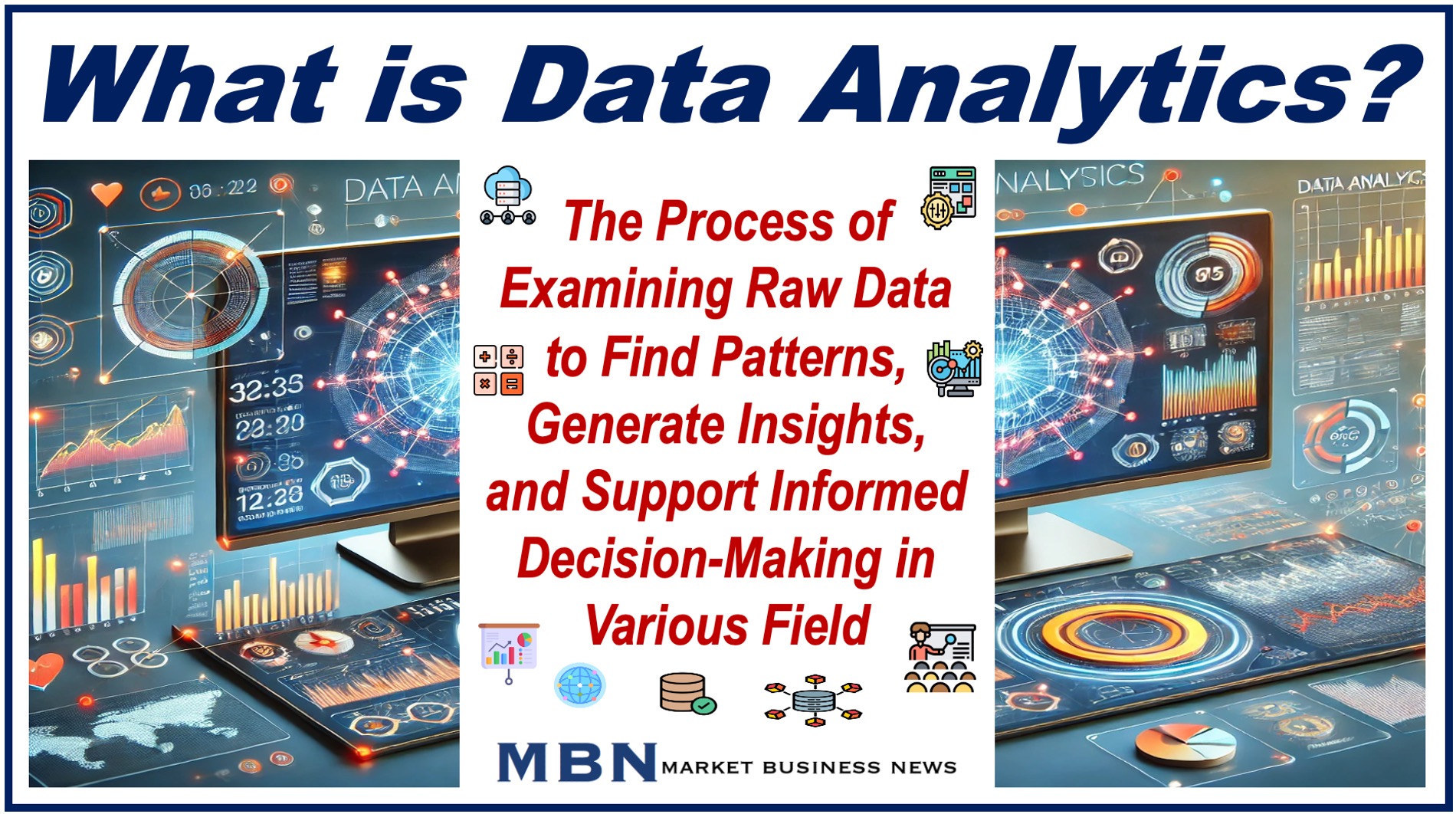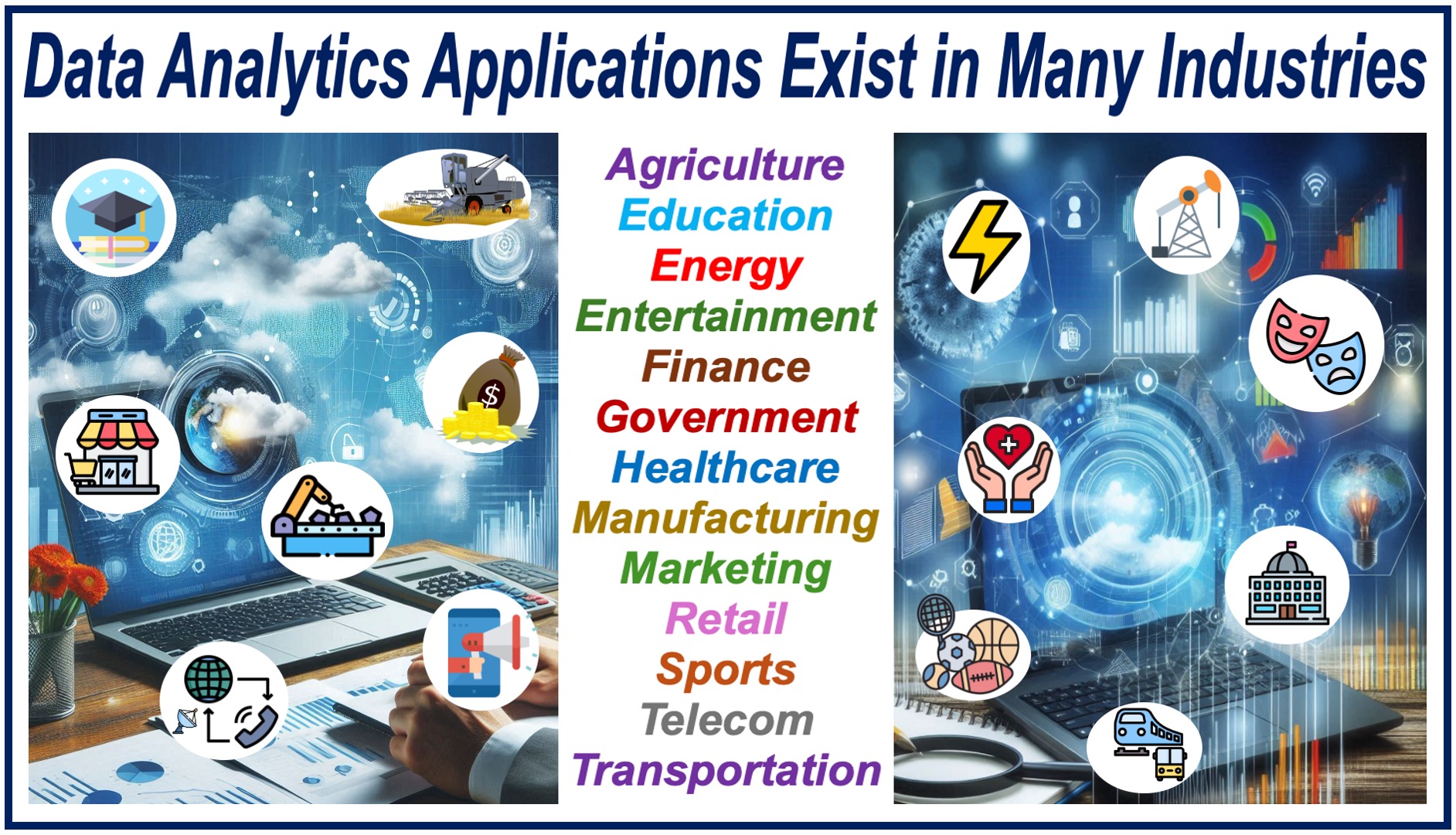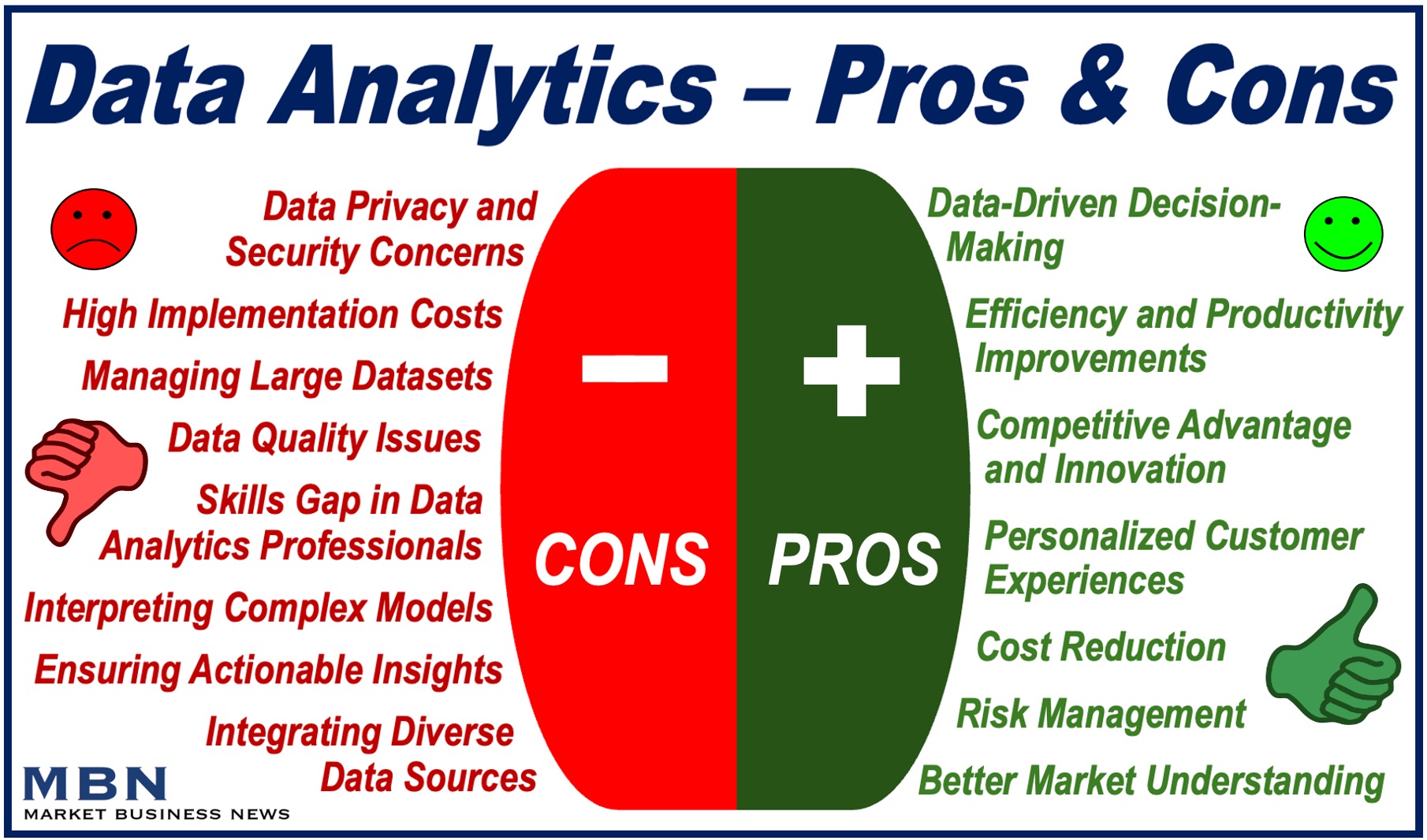Do you analyze raw data to identify trends, answer questions, draw conclusions, make forecasts, uncover patterns, optimize processes, generate insights, and drive informed decision-making? If so, you are involved in Data Analytics.
Data analytics includes diverse areas like data analysis, data science, and data engineering, all working together to analyze information.
We refer to somebody who specializes in data analytics as a Data Analyst, Data Scientist, or Data Engineer. In fact, there are several titles, depending on their specific role and expertise. Later in this article, we shall have a closer look at them.
Amazon Web Service (AWS) has the following definition of data analytics:
“Data analytics converts raw data into actionable insights. It includes a range of tools, technologies, and processes used to find trends and solve problems by using data. Data analytics can shape business processes, improve decision-making, and foster business growth.
The Importance of Data Analytics Today
In today’s fiercely competitive marketplace, gathering and analyzing information is important.
As a businessperson, data analytics helps you evaluate your competitors’ performance, marketing methods, customer demographics, product offerings, market share, social media reach, price points, and more.
Regarding the importance of data analysis, Cdata.com wrote the following:
“The ability to sift through, process, and interpret vast amounts of data is a core function of business operations today. Accurate, well-considered, and efficiently implemented data analysis can lead to significant benefits throughout the entire organizational structure.”

Types of Data Analytics
There are four main types of data analytics, each serving a unique purpose. Let’s take a look at them:
-
Descriptive Analytics (What has happened?)
In this type of analysis, we use historical data to try to understand what has happened in the past.
Example: A company’s monthly sales report that summarizes past performance.
-
Diagnostic Analytics (Why did it happen?)
Diagnostic analytics aims to explain why something happened by identifying the causes behind specific data patterns.
Example: Analyzing why a sudden drop in sales occurred by examining trends.
-
Predictive Analytics (What’s likely to happen?)
Predictive analytics forecasts what is likely to happen in the future based on current and historical data.
Example: Predicting future customer behavior, such as their likelihood to purchase a product.
-
Prescriptive Analytics (What actions should be taken?)
In this case, we try to determine what we should do to address future scenarios or improve outcomes.
Example: Suggesting marketing strategies based on past performance to boost future sales.
The Data Analytics Process
The process consists of several steps, from gathering data to interpreting and presenting the information:
-
Data Collection
The first step involves gathering information from various sources such as internal databases, web data, and *IoT devices.
* IoT (Internet of Things) refers to interconnected devices that communicate and share data over the internet, enabling automation, monitoring, and control in various environments. For example, your car can communicate with your house, which can also interact with different devices at home and outside.
You must ensure that the data you collect is of the highest quality; otherwise, the entire process could be a waste of time.
-
Data Cleaning and Preparation
In this step, you will need to address any missing or inconsistent data to ensure that your dataset is accurate. *Clean data is crucial for conducting reliable analysis.
* The term ‘clean data’ means information that is free from errors or inconsistencies, in other words, data that is accurate.
-
Data Exploration
In this phase, you identify patterns, trends, and unusual data points within the dataset.
Visualizing the data (looking at the data) through charts, graphs, and dashboards will help you gain a clearer understanding of the information.
-
Modeling and Analysis
In this phase, you use statistical models and algorithms to understand relationships and trends in your data.
At this stage, you can apply machine learning for predictive or prescriptive analysis, helping you forecast outcomes or suggest actions.
-
Interpretation and Communication
When you have completed your analysis, you must present your findings in a clear and actionable manner.
Storytelling with data is a skill you must have or need to learn in order to convey insights effectively and ensure your message is understood by decision-makers and other stakeholders.
Tools and Technologies for Data Analytics
-
Overview of Popular Data Analytics Tools
There are several widely used tools in data analytics, including Excel for basic analysis, Python and R for advanced statistical modeling, SQL for database management, and visualization platforms like Tableau and Power BI.
-
Emerging Technologies
Technologies like *artificial intelligence (AI), *machine learning (ML), and big data platforms such as Hadoop and Spark are shaping the future of data analytics, enabling deeper insights from vast datasets.
* Artificial Intelligence refers to the simulation of human intelligence in machines that can perform tasks like learning, reasoning, and problem-solving. Machine Learning is a subset of AI that enables systems to learn from data and improve their performance without human intervention, adapting and improving as they go.
-
Importance of Automation and Cloud-Based Solutions
Automation streamlines data analysis processes, saving time and reducing human error. Cloud-based solutions provide scalability and accessibility, making it easier for you to manage large volumes of data efficiently.
Applications of Data Analytics in Various Industries
Today, data analytics has numerous applications across virtually every industry. Here are some key industries:
-
Finance
In the world of finance, data analytics plays a crucial role in risk analysis, fraud detection, and investment decision-making.
It helps banks, insurance companies, investment firms, credit card companies, and other financial institutions make more informed decisions and minimize financial risks.
-
Healthcare
In healthcare, data analytics is used for predictive modeling in patient care, drug discovery, and improving operational efficiency, leading to better treatment outcomes and resource management.
Many medical advancements and pharmaceutical breakthroughs would not have occurred without data analysis, which has been crucial for drug discovery and improving healthcare outcomes.

-
Retail
Retailers use data analytics for *customer segmentation, inventory optimization, and personalized marketing, enabling them to understand customer behavior and improve sales strategies.
* Customer Segmentation: In a previous article, we wrote the following about customer segmentation:
“Customer Segmentation is the process of dividing customers and prospects into sub-groups or segments based on shared characteristics. You can then tailor your marketing strategies to specific audience types, resulting in more efficient and successful sales and marketing campaigns.”
-
Manufacturing
Data analytics helps manufacturers optimize the supply chain, implement predictive maintenance to reduce equipment downtime, and improve processes, thus boosting efficiency and overall profitability.
-
Sports
Sports teams and organizations use data analytics for performance analysis, strategy development, injury prevention, and *player scouting. They also apply it to enhance fan engagement, gain competitive advantages, and improve the overall fan experience.
* Player Scouting refers to finding new talent, similar to headhunting but specifically in sports.
Benefits of Data Analytics
Businesses across the world have embraced data analytics because of the various benefits it offers. Here are some key advantages:
-
Data-Driven Decision-Making
Data analytics enables you to make informed choices or decisions based on factual insights rather than assumptions.
It allows you to make a calculated decision rather than a random guess.
-
Efficiency and Productivity Improvements
It helps you streamline processes, saving your business both time and resources. By identifying inefficiencies and automating tasks, you can improve productivity, reduce manual labor, and focus on higher-priority activities.
-
Competitive Advantage and Innovation
It can help your company stay ahead by identifying trends and new opportunities.
-
Personalized Customer Experiences
If you have access to well-prepared, high-quality consumer data, which data analytics ensures, you can better tailor your products or services to meet customer needs.
-
Cost Reduction
Data analytics helps you optimize operations by identifying inefficiencies and streamlining processes, which reduces unnecessary expenses.
By analyzing how resources are used, you can budget more effectively and eliminate waste, ultimately driving down costs and making your business more profitable.
-
Risk Management
If you have the right data at your disposal, you will be better able to identify and minimize potential risks.
-
Better Market Understanding
Using data analytics, you can gain valuable insights into customer behavior and market trends. You can then adapt your strategies, anticipate demand, and spot new opportunities.
With better market understanding, you are more likely to remain competitive and meet customer needs effectively.

Challenges in Data Analytics
Like everything in life, there are advantages and disadvantages. Here are some challenges:
-
Data Privacy and Security Concerns
You must ensure that sensitive information is protected, as data breaches can lead to legal and financial consequences.
-
Managing Large Datasets and Integrating Diverse Data Sources
Handling vast amounts of data from different sources can overwhelm your systems, requiring advanced tools to organize and analyze effectively.
If you implement cloud-based solutions and automation, you can manage large datasets more effectively and ensure seamless integration of diverse data sources.
-
Skills Gap in Data Analytics Professionals
Finding skilled data professionals can be challenging, which may slow down your efforts to implement advanced data analytics solutions.
-
Interpreting Complex Models and Ensuring Actionable Insights
Even with advanced models, you need to interpret the results accurately to turn data insights into practical business actions.
The Future of Data Analytics
Data analytics has evolved significantly over the past few decades, and as technology advances, it is likely to continue growing and transforming the way businesses operate.
-
Role of AI and Machine Learning in Advancing Analytics
AI and machine learning help systems quickly process large datasets, making predictions and automating decisions. As AI evolves, you will gain even more insights from data.
-
The Impact of Big Data and Real-Time Analytics
*Big data and *real-time analytics let you instantly analyze massive amounts of data, helping you make quick decisions and predict trends in fast-moving industries.
* Big Data refers to large, complex datasets that traditional processing methods cannot handle. Real-Time Analytics is the use of information and related resources for analysis as soon as it enters the system.
-
Emerging Trends: Prescriptive Analytics, Edge Computing, Automation
Prescriptive analytics gives actionable recommendations (recommendations we can act upon).
Edge computing speeds up analysis by processing data close to where it’s created.
Automation makes everything faster and more efficient.
-
The Shift Toward Data Democratization
Data democratization means making data accessible to everyone, not just experts. This means that more people in your organization use data to make informed decisions.
Key Roles in Data Analytics
In the world of data analytics, different specialists play important roles in extracting value from data. Here are some key positions:
-
Data Analyst
Data analysts are responsible for interpreting data to answer specific business questions. They often work with structured data, using tools like Excel or SQL to generate reports and insights.
-
Data Scientist
These professionals focus on building models and algorithms to make predictions and uncover patterns. They use advanced methods like machine learning and statistical analysis to solve complex problems.
The following quote comes from MastersinDataScience.org:
“A data scientist’s role combines computer science, statistics, and mathematics to collect and organize data from many different data sources, translate results into actionable plans, and communicate their findings to their organizations. Successful data scientists must be effective communicators, leaders, team members, and high-level analytical thinkers.”

-
Data Engineer
Data engineers ensure that data is properly collected, stored, and organized. They build and maintain the data infrastructure that allows analysts and data scientists to work efficiently.
-
Business Intelligence (BI) Analyst
This person specializes in analyzing business data to support decision-making. They create dashboards and reports to visualize key *metrics and trends.
* Metrics refers to a set of numbers and statistics that provide information about a business’s performance or specific activity or function. Metrics tell us how well/badly we or our company is doing and whether we are going in the right direction.
-
Data Architect
Data architects design the overarching data framework for their organizations, ensuring that data is structured, secure, and accessible for analysis.
They play a key role in developing data systems that integrate across various platforms.
-
Analytics Consultant
This type of consultant offers expertise on how businesses can use data analytics to improve their strategies, processes, and overall performance. They typically work across multiple industries, providing tailored solutions.
-
Machine Learning Engineer
This is the most recent role on this list. These specialists focus on deploying machine learning models into production. They work closely with data scientists and engineers to create scalable, automated systems that use data to continuously learn and improve over time.
Final Thoughts
Let’s recap. Data analytics involves collecting, analyzing, and interpreting data to make informed decisions.
In today’s marketplace, it plays a vital role in optimizing business processes, improving productivity, and offering personalized customer experiences.
The four main types of data analytics—descriptive, diagnostic, predictive, and prescriptive—help businesses in different ways.
While AI, machine learning, and big data continue to shape the future of analytics, challenges like managing large datasets and ensuring data privacy remain.
As more industries embrace analytics, the importance of making data accessible to all (data democratization) and using advanced tools to interpret insights grows.
Data analytics will continue transforming industries, offering better decision-making and growth.
